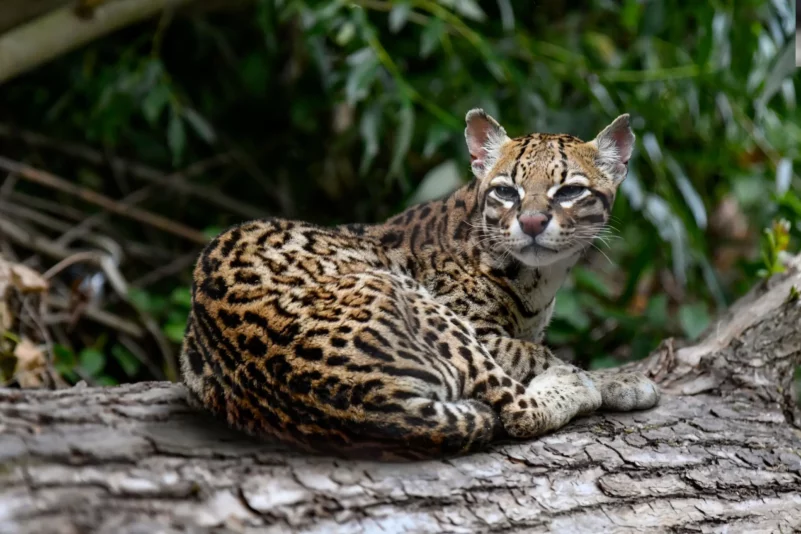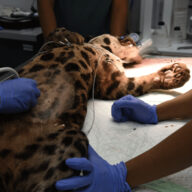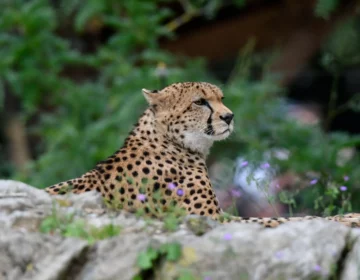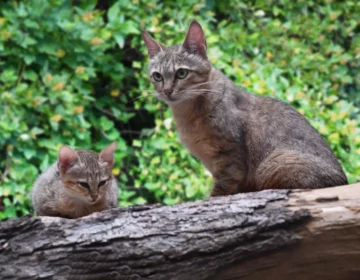
Ocelot
Leopardus pardalis
Ocelot
The ocelot is genetically very diverse throughout its range. Between four and nine subspecies have been proposed, but based on recent research only two subspecies are provisionally recognised:
- Leopardus pardalis pardalis
- Leopardus pardalis mitis
APPEARANCE
The ocelot is a medium-sized cat with a short coat that ranges in color from pale yellow, yellowish beige, yellowish brown to greyish. It is covered with dark black spots, stripes, and rosettes, which diminish on the limbs and merge into the typical longitudinal stripes on the flanks. The throat and belly are white. It has rounded ears, the back of which is black with a central white spot. The tail of the ocelot is usually short with black rings or stripes on the upper side. Each individual is visually unique and coat colors can vary between and within populations. The ocelot has relatively stocky legs and proportionally large paws, with the front paws being slightly larger than the hind paws. Males typically weigh more than females, and ocelots from rainforests are larger than those from semi-arid habitats.
DISTRIBUTION AND HABITAT
The ocelot’s distribution range is large. Its location ranges from Texas in the USA across the Mexican coast, through Central and South America, to northeastern Argentina and southern Brazil.
The ocelot occupies a wide variety of habitats but is most commonly associated with dense habitats such as evergreen forests and areas near fresh water. Ocelot habitats may include tropical and subtropical dry, floodplain, deciduous, semi-deciduous, coastal, lowland, montane, foothill, riparian, or coniferous forests, but they avoid bamboo forests.
FOOD
Until recently, it was thought that the ocelot feeds mainly on small animals (weighing less than 0.6 kg. Recently, it has been shown that ocelots can depend on larger prey (>1 kg) such as agouti, paki, anteaters, monkeys, snakes, sloths, Brazilian rabbits, porcupines, and even deer.
CURIOSITY
Occasional capture of big bats by ocelots has also been reported, indicating another possible hunting method involving leaping and capturing prey in flight.
MAIN THREATS
The main threats to the ocelot are habitat destruction and fragmentation (mainly due to logging and agricultural activities) leading to a loss of food base. In addition, ocelots are threatened by population isolation due to habitat fragmentation, which can lead to a loss of genetic diversity.





